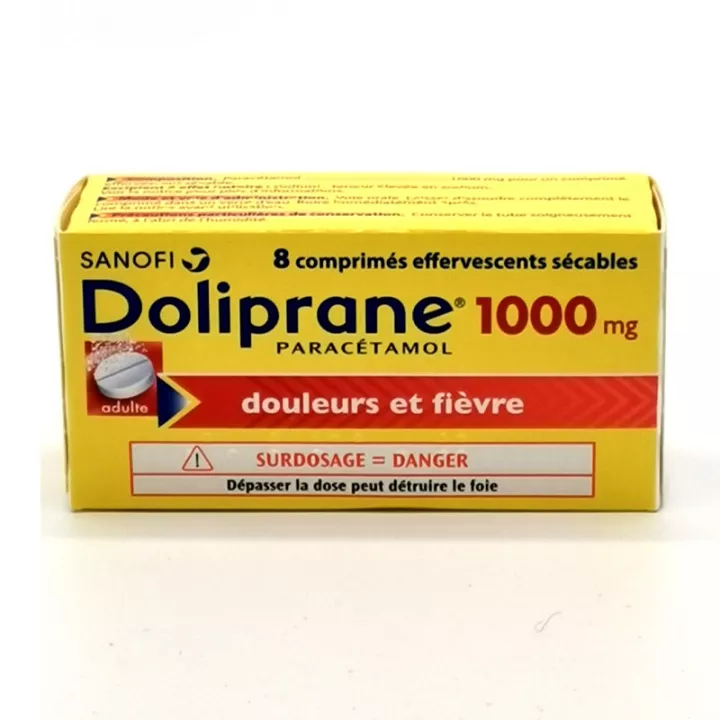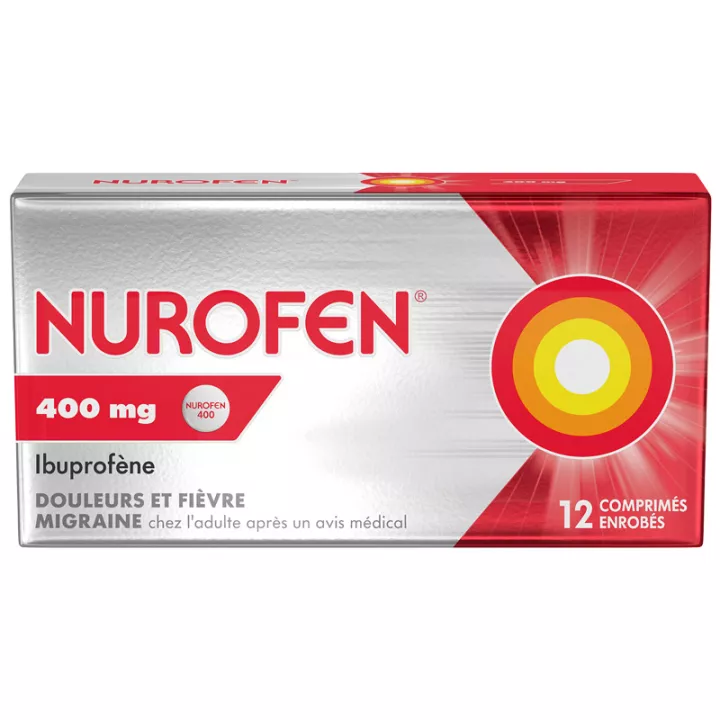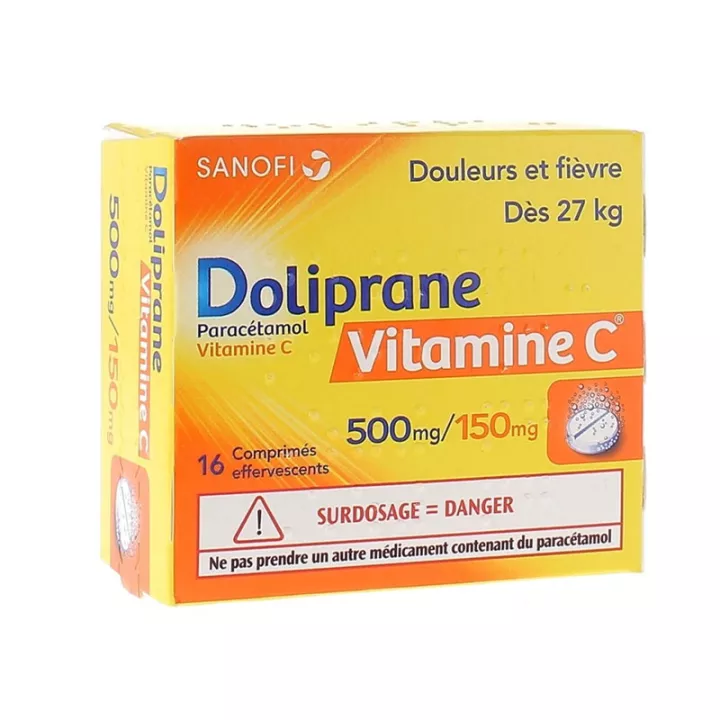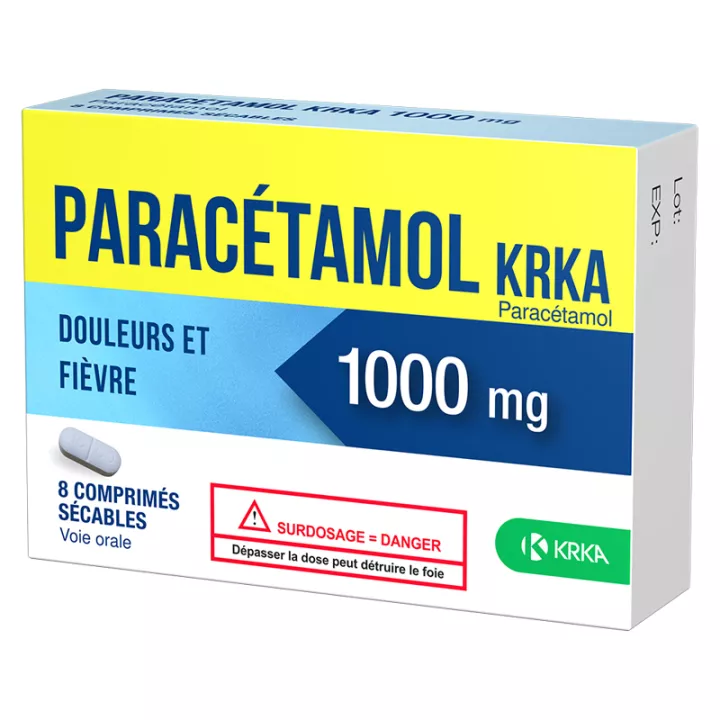NOTICE
ANSM - Updated on: 27/07/2017
Description of the Medicine
DOLIPRANE 1000 mg, sparkling effervescent tablet
© PARACA Tamol
© framed
Please read this leaflet carefully before you start taking this medication because it contains important information for you.
You should always take this medication exactly as prescribed by your doctor or pharmacist.
AT· Keep this leaflet. You might need to read it again.
AT· Contact your pharmacist for advice or information.
AT· If you experience any side effects, talk to your doctor or pharmacist. This also applies to any undesirable effects not mentioned in this leaflet. See section 4.
AT· You should contact your doctor if you experience no improvement or feel less well after 3 days in case of fever or 5 days in case of pain.
Do not allow this medication to reach children.
What is in this leaflet?
1. What is DOLIPRANE 1000 mg, SERIOUS SPRINKLED PACK and when is it used?
2. What should I tell my health care provider before taking DOLIPRANE 1000 mg?
3. How to take DOLIPRANE 1000 mg, sparse effervescent tablet?
4. What are the possible undesirable effects?
5. How to store DOLIPRANE 1000 mg, Sterilized Sparkling Tablet?
6. Contents of the package and other information.
1. WHAT DOLIPRANE 1000 MGS, SERBIAN AND SERIOUS POWDER AND WHAT IT IS USED FOR?
Pharmacotherapeutic group: OTHER ANALGESICS AND ANTI-PYRETIQUES ANILIDES ATC code: N02BE01
DOLIPRANE is an analgesic (calms the pain) and an antipyretic (lowers the fever).
The active substance of this medication is paracetamol.
It is used to treat pain and / or fever, for example in the case of headaches, flu-like symptoms, dental pain, body aches, painful rulers.
It can also be prescribed by your doctor in the pains of osteoarthritis.
This presentation is reserved for the adult and the child from 50 kg (that is to say from about 15 years). Read the Posology section carefully.
For children weighing less than 50 kg, there are other paracetamol specimens with a more suitable dosage. Do not hesitate to ask your doctor or pharmacist for advice.
2. BEFORE YOU TAKE DOLIPRANE 1000 mg, SERBIENT SERRENCIENT POWDER?
Do not take DOLIPRANE 1000 mg, effervescent tablet:
AT· If you are allergic (hypersensitive) to paracetamol or to any of the other ingredients of this medication, listed in section 6.
AT· If you have severe liver disease.
AT· To treat a child under 6 years old as it can swallow and sag. Use another form.
This medicine contains paracetamol. Other medicines contain it. Check that you are not taking any other medicines containing paracetamol, including if they are medicines obtained without a prescription. Do not combine them , so as not to exceed the recommended daily dose. ( see "Dosage " and "Symptoms and Instructions for Overdose") |
Warnings and Precautions
Talk to your doctor or pharmacist before taking DOLIPRANE 1000 mg .
Take special care with DOLIPRANE
AT· If the pain persists more than 5 days , or the fever is longer than 3 days , or if there is insufficient efficacy or any other signs, do not continue treatment without your doctor's advice.
AT· Taking paracetamol may cause liver function problems.
AT· You should seek the advice of your doctor before taking this medication:
o If you weigh less than 50 kg,
o If you have a liver disease or a serious kidney disease,
o If you frequently drink alcohol or have stopped drinking alcohol recently,
o If you suffer from dehydration,
o If you are suffering from chronic malnutrition, if you are in the middle of the day, if you have lost a lot of weight recently, if you are over 75 or if you are over 65 and you if you have AIDS or a chronic viral hepatitis, if you suffer from cystic fibrosis (genetic and hereditary disease characterized by long-term illness) (Eg, severe respiratory infections), or if you have Gilbert's disease (a hereditary condition associated with increased bilirubin levels in the blood).
o if you are allergic to aspirin and / or non-steroidal anti-inflammatory drugs
AT· The consumption of alcoholic beverages during treatment is discouraged.
AT· In cases of recent withdrawal from chronic alcoholism, the risk of hepatic disease is increased.
AT· In case of administration in a child, the dose depends on its weight (see section "How to take DOLIPRANE 1000 mg, effervescent tablet?").
AT· In case of acute viral hepatitis, stop your treatment and consult your doctor.
Blood tests
Tell your doctor if you are taking DOLIPRANE and you need to take a blood test because this medication may affect the results of your uric acid and sugar levels (glycemia) in the blood.
This medication contains 408 mg sodium per effervescent tablet. You should take this into account if you are controlling your sodium intake.
IN CASE OF DOUBT DO NOT HESITATE TO ASK THE NOTICE OF YOUR DOCTOR OR YOUR PHARMACIST.
children
Not applicable.
Other medicines and DOLIPRANE 1000 mg, effervescent tablet
Inform your doctor or pharmacist if you are taking, have recently taken or could take any other medicines.
Do not take any other medicines containing paracetamol. You may be overdosed.
If you are taking oral anticoagulant therapy (warfarin or AVK), taking DOLIPRANE 1000 mg, an effervescent tablet with maximum doses (4 g / day) for more than 4 days, requires monitoring reinforced by biological examinations, notably by INR. In this case, consult your doctor.
The effectiveness of paracetamol may be impaired if you are taking cholesterol-lowering medications at the same time as decreasing blood cholesterol levels (more than 2 hours between the 2 catches).
If you are receiving paracetamol, a treatment with flucloxacillin (an antibiotic), you may be at risk of metabolic acidosis (too acidic blood, causing an acute respiratory frequency).
The toxicity of paracetamol can be increased if you take :
AT· medicines that are potentially toxic to the liver,
AT· medicines that promote the production of paracetamol toxic metabolite such as anti-epileptic medicines (phenobarbital, phenytoin, carbamazepine, topiramate),
AT· rifampicin (an antibiotic),
AT· at the same time alcohol.
DOLIPRANE 1000 mg, effervescent tablet with food, drink and alcohol
The consumption of alcoholic beverages during treatment is discouraged.
Pregnancy, breastfeeding and fertility
If you are pregnant or nursing, planning to become pregnant or planning a pregnancy, ask your doctor for advice or pharmacist before taking this medication.
Pregnancy and breast feeding
This medication can be used during pregnancy and breast-feeding. Use the minimum dose to reduce your pain and / or fever for as short a time as possible and as often as possible. Contact your doctor or midwife if pain and / or fever does not decrease or if you need to take this medication more frequently during your pregnancy.
© FertilitÃ
It is possible that paracetamol may alter women's fertility, in a manner that is reversible at the end of treatment.
Sport
Not applicable.
Driving and using machines
Not applicable.
DOLIPRANE 1000 mg, sodium effervescent tablet contains sodium.
3. HOW TO TAKE DOLIPRANE 1000 Mg Sterilizable Tablet?
Caution: this presentation contains 1000 mg paracetamol per unit: do not take 2 tablets at a time.
Dosage
Always follow the dosage prescribed by your doctor. If in doubt, consult your doctor or pharmacist.
This presentation is reserved for the adult and the child weighing more than 50 kg (that is to say from about 15 years).
For children weighing less than 50 kg, there are other paracetamol dosages that are more suitable for dosing. Do not hesitate to ask your doctor or pharmacist for advice.
Dosage in adults and children from 50 kg (ie from about 15 years)
The usual dosage is one half to one tablet at 1000 mg per dose, to be renewed after 6 to 8 hours. If necessary, the plug can be reapplied after a minimum of 4 hours.
Dose of paracetamol never to exceed
AT· In an adult or a child weighing more than 50 kg:
Generally speaking, it is not necessary to exceed 3 grams of paracetamol per day (3 splittable effervescent tablets per day).
However, if you have more intense pain, and only on the advice of your doctor , the total dose can be increased to 4 grams of paracetamol per day (4 splittable effervescent tablets per day).
NEVER TAKE MORE THAN 4 GRAMS OF PARACETAMOL PER DAY (taking all medicines containing paracetamol into their formula).
AT· Special situations:
The maximum daily dose should not exceed 60 mg / kg / day (without exceeding 3 g / day) in the following situations:
o if you weigh less than 50 kg,
o if you have a liver disease or a serious kidney disease,
o if you frequently drink alcohol or have stopped drinking alcohol lately,
o if you suffer from dehydration,
o if you are suffering from chronic malnutrition, if you are in the summer, if you have lost a lot of weight recently, if you are over 75 or if you are over 65 and you have long-term illnesses, if you have the AIDS virus or a chronic viral hepatitis, if you suffer from cystic fibrosis (genetic and hereditary disease characteristically including severe respiratory infections), or if you have Gilbert's disease (a hereditary condition associated with an increase in blood bilirubin levels).
IN CASE OF DOUBT, ASK FOR ADVICE TO YOUR DOCTOR OR YOUR PHARMACIST .
Method and route of administration
This medication is used orally.
You should dissolve the tablet in a glass of water. Wait for complete dissolution before drinking immediately after the contents of the glass.
The tablets are dry, ie you can cut them into 2 equal parts if necessary.
Frequency of administration
Regular intakes prevent pain or fever from returning: see section "Dosage".
In children, the catch should be kept at regular intervals, including at night, preferably 6 hours , and at least 4 hours.
In adults , catches should be spaced at least 4 hours apart.
In case of severe kidney disease (severe kidney failure), you should wait at least 8 hours between each dose.
If you feel that the effect of DOLIPRANE is too strong or too weak, consult your doctor or pharmacist.
Duration of treatment
If the pain persists more than 5 days or the fever more than 3 days, if they worsen, do not continue treatment without the advice of your doctor.
If you take more than DOLIPRANE 1000 mg, you should not have:
Immediately consult your doctor or pharmacist or medical emergencies.
Overdose can lead to liver disease (hepatic insufficiency), gastrointestinal bleeding, brain disease (encephalopathy), coma, or even especially in populations at higher risk, such as young children, the elderly and in certain situations (liver disease, alcoholism, chronic malnutrition). In the first 24 hours, the main symptoms of poisoning are: nausea, vomiting, loss of appetite, abdominal pain, fetus.
Overdosage may also result in: pancreas (pancreatitis), hyperamylaseemia (increased amylase in the blood), kidney disease (acute renal failure), and a blood problem in which red blood cells, white blood cells and platelets are all reduced in number which results in:
AT· fatigue, shortness of breath, and a finger;
AT· frequent infections accompanied by severe fever and chills, sore throat or ulcers of the mouth;
AT· a tendency to bleed or present spontaneous bruising, nosebleeds.
If you forget to take DOLIPRANE 1000 mg, effervescent tablet:
Do not take a double dose to make up for a forgotten dose.
If you stop taking DOLIPRANE 1000 mg, S effervescent tablet:
Not applicable.
4. WHAT ARE POSSIBLE SIDE EFFECTS?
Like all medicines, this medication can cause side effects, although not everybody gets them.
AT· Rarely, an allergic reaction may occur:
o pimples and / or redness on the skin,
o urticaria,
o abrupt swelling of the face and neck, which can cause difficulty breathing (Quedocotic edema),
o abnormal discomfort with significant drop in arterial pressure (anaphylactic shock).
If an allergy occurs, you should immediately stop taking this medication and consult your doctor promptly. In the future, you will never have to take medicines containing paracetamol.
AT· Very rare adverse effects of severe skin have been reported.
AT· Exceptionally, this drug may decrease the number of certain blood cells: white blood cells (leukopenia, neutropenia), platelets (thrombocytopenia), which may manifest as nosebleeds or gums. In this case, consult a physician.
AT· Other possible undesirable effects (the frequency of which can not be estimated from the available data): liver function disorders, severe reduction of certain white blood cells that can cause serious infections (agranulocytosis), destruction of red blood cells in the blood (hemolytic anemia in patients with glucose deficiency 6 'phosphate dehydrogenase), cutaneous eruption in rounded red patches with d Eating and burning sensation, leaving colored tasks that can appear at the same locations in the event of a medication recurrence (fixed pigmented rhythm), localized pain in the chest that can radiate to the left shoulder and the jaw of allergic origin (Kounis syndrome), difficulty breathing (bronchospasm). In this case, consult a physician.
Declaration of side effects
If you experience any undesirable effects, talk to your doctor or pharmacist. This also applies to any undesirable effects not mentioned in this leaflet. You can also report undesirable effects directly via the national reporting system: National Agency for the Safety of Medicines and Health Products (NSAH) and network of Regional Pharmacovigilance Centers - Website: www.ansm.sante.fr
By reporting adverse effects, you are helping to provide more information about the safety of the drug.
5. HOW TO STORE DOLIPRANE 1000 mg, effervescent tablet?
Keep this medication out of the reach and sight of children.
Do not use this medication after the expiration date stated on the carton.
For the box of 8 tablets (tube packing): Keep the container carefully closed, away from moisture.
For the case of 54 or 100 tablets (packaging with heat-sealed film): No special precautions for storage.
Do not throw any medicines into the whole sewer or with the household garbage. Ask your pharmacist to discontinue the medications you are no longer using. These measures will help to protect the environment.
6. PACKAGE CONTENTS AND OTHER INFORMATION
What DOLIPRANE 1000 mg contains: Sparkling Effervescent Tablet
AT· The active substance is:
© PARACA Tamol ............................................... .................................................. ................ 1000 mg
For a sparkling effervescent tablet.
AT· The other ingredients are anhydrous citric acid, mannitol, sodium saccharin, sodium lauryl sulfate, povidone K90, sodium bicarbonate, anhydrous sodium carbonate, leucine, orange flavoring.
* Orange composition: orange essential oil, concentrated orange juice, acetal aldehyde, ethyl butyrate, citral, C6 aldehyde, linalool, terpinolol, ethyl acetate, butylhydroxyanisole, gum arabic, maltodextrin.
What is DOLIPRANE 1000 Mg, Sterilized Effervescent Tablet and Contents of Outer Packaging
This medication is in the form of a sterile effervescent tablet. Each box contains 8, 54 or 100 sparkling effervescent tablets.
Not all presentations may be marketed.
Holder of the marketing authorization
SANOFI-AVENTIS FRANCE
82 AVENUE RASPAIL
94250 GENTILLY
Operator of the marketing authorization
SANOFI-AVENTIS FRANCE
82 AVENUE RASPAIL
94250 GENTILLY
Maker
SANOFI WINTHROP INDUSTRIE
NORTH-EAST AREA
RUE EDOUARD BRANLY
14104 LISIEUX CEDEX
or
A. NATTERMANN & CIE GMBH
NATTERMANNALLEE 1
50829 COLOGNE
GERMANY
Names of medicines in the Member States of the European Economic Area
Not applicable.
The last date on which this notice has been revised is
{month YYYY}.
Other
Detailed information on this medicinal product can be found on the website of the ANSM (France).
Health Education Council:
WHAT TO DO IN THE EVENT OF FEVER?
Normal body temperature varies from person to person and is between 36.5Â ° C and 37.5Â ° C. A rise above 38 ° C is considered a fever, but it is advised to treat the fever with a medication below 38.5Â ° C.
This medication is for the adult and the child from 50 kg (ie from about 15 years).
If the disorders that the fever causes are too troublesome, you can take this medication that contains paracetamol in the doses indicated.
To avoid any risk of dehydration, consider frequent drinking.
With this medication, the fever must fall rapidly, nevertheless:
AT· if other signs appear,
AT· if the fever persists for more than 3 days or if it worsens,
AT· if the headache becomes violent, or in case of vomiting,
CONSULT YOUR DOCTOR IMMEDIATELY
WHAT TO DO IN CASE OF PAIN?
The intensity of the perception of pain and the ability to resist it vary from person to person.
AT· If there is no improvement after 5 days of treatment,
AT· if the pain is violent, unexpected and occurs abruptly (including severe pain in the chest) and / or reverses regularly,
AT· if it is accompanied by other signs such as general discomfort, fever, unusual swelling of the painful area, decreased strength in a limb,
AT· if it wakes you up at night,
CONSULT YOUR DOCTOR IMMEDIATELY









